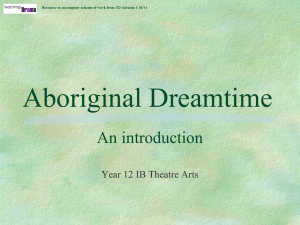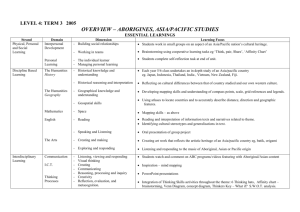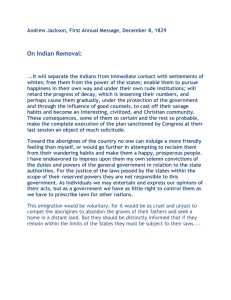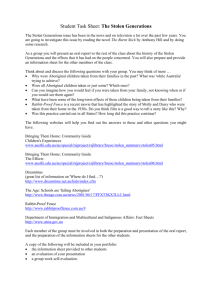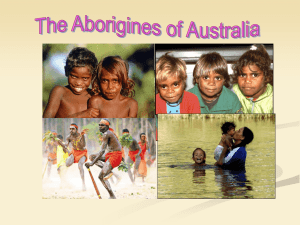Reading Across Learning Religious and Moral Education
advertisement
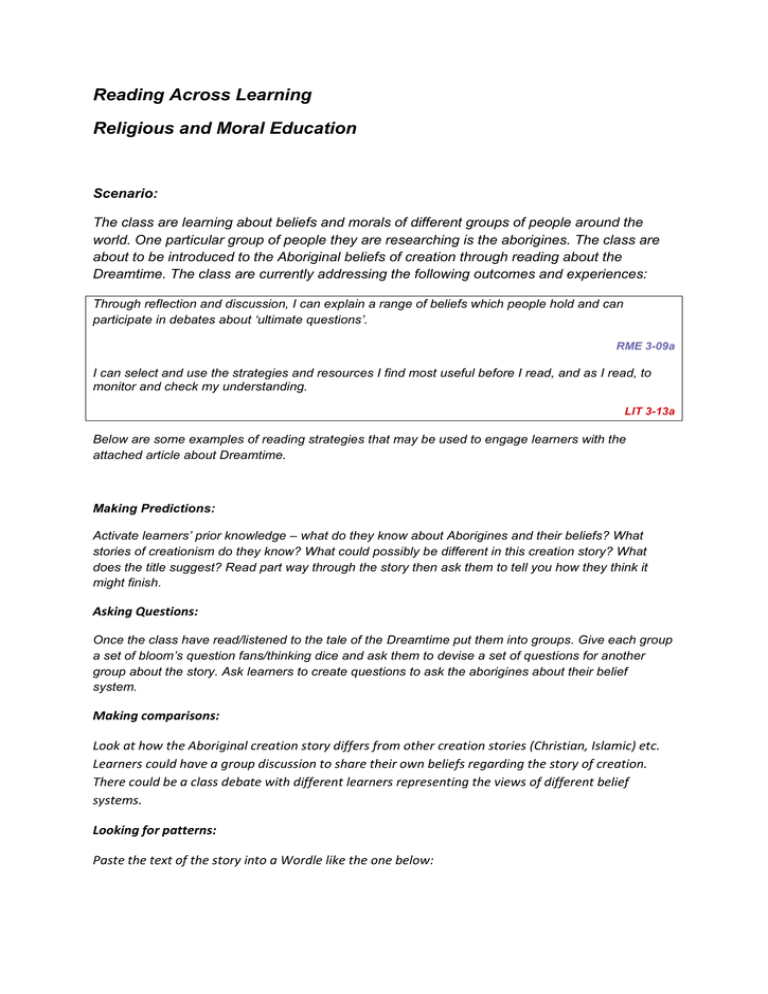
Reading Across Learning Religious and Moral Education Scenario: The class are learning about beliefs and morals of different groups of people around the world. One particular group of people they are researching is the aborigines. The class are about to be introduced to the Aboriginal beliefs of creation through reading about the Dreamtime. The class are currently addressing the following outcomes and experiences: Through reflection and discussion, I can explain a range of beliefs which people hold and can participate in debates about ‘ultimate questions’. RME 3-09a I can select and use the strategies and resources I find most useful before I read, and as I read, to monitor and check my understanding. LIT 3-13a Below are some examples of reading strategies that may be used to engage learners with the attached article about Dreamtime. Making Predictions: Activate learners’ prior knowledge – what do they know about Aborigines and their beliefs? What stories of creationism do they know? What could possibly be different in this creation story? What does the title suggest? Read part way through the story then ask them to tell you how they think it might finish. Asking Questions: Once the class have read/listened to the tale of the Dreamtime put them into groups. Give each group a set of bloom’s question fans/thinking dice and ask them to devise a set of questions for another group about the story. Ask learners to create questions to ask the aborigines about their belief system. Making comparisons: Look at how the Aboriginal creation story differs from other creation stories (Christian, Islamic) etc. Learners could have a group discussion to share their own beliefs regarding the story of creation. There could be a class debate with different learners representing the views of different belief systems. Looking for patterns: Paste the text of the story into a Wordle like the one below: What can a tool like this reveal about the story? What key words are identified? Do these surprise us? What do they tell us about the Aboriginal culture and beliefs? Making Pictures: Ask the learners to storyboard the Dreamtime tale. Learners could create comic strips using a tool like Comic Life. Ask the learners to recreate the tale using only visuals. Summarising: Ask the learners to retell the story in a different form – for example as a news report. Ask them to turn it into a mini-epic of 50 words or less. Pair the learners up. Story telling Round Robin - Have one learner who has read the story tell it to another who then passes it on (similar to Chinese whispers) until the final person retells the story to a class as a whole – see how much of the key messages remain. Evaluating: Ask the learners to think about the writer’s purpose and audience. Does the writer achieve their purpose? Does this story change anyone’s views on the stories of creation? The Aborigine Creation Story - The Dreamtime – The Australian Aborigines have lived in Australia for about 60000 years. This makes them one of the oldest cultures in the world. Over that time their culture (their way of life and beliefs) changed very little. In the 1700s, however, changes took place which the Aborigines have never recovered from. Britain sent its criminals to Australia as a punishment for their crimes. Some of these settlers were very cruel and they hunted the Aborigines like animals. Many Aborigines were taken into slavery. The white men also destroyed the sacred sites of the Aborigines. These were the places that the Dreamtime Ancestors were believed to live and destroying these places had a terrible effect on the Aborigines. The destruction continues today although the Aborigines are trying to fight back through the Australian courts to protect their sacred lands. If we look at the world around us we can see the terrible damage that we have done, and are still doing, to the environment. We can also see the terrible cruelty we inflict on the animals and people with whom we share planet Earth. The Aborigines’ story of the Dreamtime could teach us all much that we have forgotten about how important the natural world is. We have been told, as our fathers were before us, that there was land, but it was a bare, flat, barren land. No animals ran there. No birds sang overhead. No trees or bushes grew. No sound of water could be heard. Nor was there any man or woman. The Maker of Many Things brought the Dreamtime ancestors from under the ground and over the seas. With them, life came to the barren, flat plain. Some of the Dreamtime ancestors looked like men or women. Others looked like the animals or creatures which descended from them. But often the ancestors could change their shape. So the Swordfish ancestor could look like a swordfish, or a man or woman. As the Dreamtime ancestors wandered over the land, many adventures befell them. They met with other ancestors. They met strange creatures and fought battles. Each time something happened, the shape of the landscape changed. Hills arose and plants grew wherever incidents took place. Where the Rainbow Snake ancestor moved through the land, rivers and mountains appeared. The Dreamtime ancestors also made the creatures who live on the land, including men and women. The sun, moon, and stars also came from the Dreamtime. The sun was created in the following way. One day Emu ancestor and Eagle ancestor were fighting. Eagle took one of Emu’s eggs and threw it up into the air. Soaring up, it burst into flames. The Maker of Many Things fed the flames with wood. In this way, the sun was made, and is made anew each day with fresh wood. When their work was finished, the Dreamtime ancestors sank back into the earth or rose into the sky. Those who have the secret knowledge – passed down through generations of Aboriginal people – can still see the Dreamtime ancestors all around in the land and in its creatures. They see them in the hills, deserts, waterholes, rivers, sand, trees, animals, birds, insects, and the people themselves. The whole land is alive with the power of the Dreamtime for those with this secret knowledge which allows them to see clearly. For those without this knowledge, the land looks dusty, hilly and lifeless.
